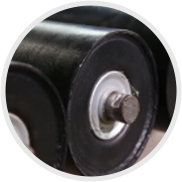 Afrikaans
Afrikaans  Albanian
Albanian  Amharic
Amharic  Arabic
Arabic  Armenian
Armenian  Azerbaijani
Azerbaijani  Basque
Basque  Belarusian
Belarusian  Bengali
Bengali  Bosnian
Bosnian  Bulgarian
Bulgarian  Catalan
Catalan  Cebuano
Cebuano  Corsican
Corsican  Croatian
Croatian  Czech
Czech  Danish
Danish  Dutch
Dutch  English
English  Esperanto
Esperanto  Estonian
Estonian  Finnish
Finnish  French
French  Frisian
Frisian  Galician
Galician  Georgian
Georgian  German
German  Greek
Greek  Gujarati
Gujarati  Haitian Creole
Haitian Creole  hausa
hausa  hawaiian
hawaiian  Hebrew
Hebrew  Hindi
Hindi  Miao
Miao  Hungarian
Hungarian  Icelandic
Icelandic  igbo
igbo  Indonesian
Indonesian  irish
irish  Italian
Italian  Japanese
Japanese  Javanese
Javanese  Kannada
Kannada  kazakh
kazakh  Khmer
Khmer  Rwandese
Rwandese  Korean
Korean  Kurdish
Kurdish  Kyrgyz
Kyrgyz  Lao
Lao  Latin
Latin  Latvian
Latvian  Lithuanian
Lithuanian  Luxembourgish
Luxembourgish  Macedonian
Macedonian  Malgashi
Malgashi  Malay
Malay  Malayalam
Malayalam  Maltese
Maltese  Maori
Maori  Marathi
Marathi  Mongolian
Mongolian  Myanmar
Myanmar  Nepali
Nepali  Norwegian
Norwegian  Norwegian
Norwegian  Occitan
Occitan  Pashto
Pashto  Persian
Persian  Polish
Polish  Portuguese
Portuguese  Punjabi
Punjabi  Romanian
Romanian  Russian
Russian  Samoan
Samoan  Scottish Gaelic
Scottish Gaelic  Serbian
Serbian  Sesotho
Sesotho  Shona
Shona  Sindhi
Sindhi  Sinhala
Sinhala  Slovak
Slovak  Slovenian
Slovenian  Somali
Somali  Spanish
Spanish  Sundanese
Sundanese  Swahili
Swahili  Swedish
Swedish  Tagalog
Tagalog  Tajik
Tajik  Tamil
Tamil  Tatar
Tatar  Telugu
Telugu  Thai
Thai  Turkish
Turkish  Turkmen
Turkmen  Ukrainian
Ukrainian  Urdu
Urdu  Uighur
Uighur  Uzbek
Uzbek  Vietnamese
Vietnamese  Welsh
Welsh  Bantu
Bantu  Yiddish
Yiddish  Yoruba
Yoruba  Zulu
Zulu impact idlers are used in a belt conveyor
The Role of Impact Idlers in Belt Conveyors
Belt conveyors have become an integral part of various industries, including mining, manufacturing, and logistics. They are essential for transporting materials efficiently and reliably over varying distances. Among the critical components of a belt conveyor system are impact idlers, which play a pivotal role in enhancing its performance and longevity.
Impact idlers are specifically designed to absorb the energy generated during the transfer of materials onto the conveyor belt, particularly at loading points. When bulk materials like coal, ores, or aggregates are dropped onto the conveyor, they exert a significant force on the belt, generating impact stresses that can lead to damage over time. This is where impact idlers come into play. They act as a buffer, cushioning the belt against these impacts and facilitating a smoother transition of materials.
One of the primary benefits of using impact idlers is the protection they provide to the conveyor belt itself. By minimizing the direct impact of heavy loads, these idlers significantly reduce the wear and tear on the belt. This is crucial since conveyor belts represent a substantial investment in any material handling system. The longevity of the belt can, in turn, lead to reduced maintenance costs and enhanced overall system efficiency.
Moreover, the design and material selection of impact idlers are critical to their effectiveness. Typically constructed from sturdy materials such as steel, these idlers are designed to withstand the harsh conditions prevalent in many industrial environments. They often feature rubberized coatings or other protective surfaces to further absorb impacts and mitigate damage. The choice of idler also depends on the size and weight of the materials being transported, ensuring that they can adequately handle the operational loads without failure.
impact idlers are used in a belt conveyor

Another significant advantage of impact idlers is their role in reducing noise pollution. In many industrial settings, the sound generated during the loading of materials can be detrimental to worker health and safety. By employing impact idlers, the noise associated with material impacts is considerably reduced, thus creating a safer and more comfortable working environment.
Furthermore, the continuous use of impact idlers can enhance the stability of the conveyor system. By providing a consistent surface for the materials to land on, they help maintain the alignment of the conveyor belt and prevent misalignment issues. This is particularly important in long conveyor systems where misalignment can lead to severe operational disruptions and increased maintenance demands.
Impact idlers also contribute to improved energy efficiency within the conveyor system. By minimizing the starting and operational resistance that arises from belt damage, these idlers help ensure that the conveyor operates smoothly and requires less energy to transport materials. This can lead to significant cost savings over time, especially in large-scale operations where energy consumption is a significant concern.
In conclusion, the use of impact idlers in belt conveyors is vital for maximizing the efficiency and lifespan of these material handling systems. They protect the conveyor belt from excessive wear, reduce noise pollution, and contribute to the overall stability and energy efficiency of the operation. As industries continue to seek ways to optimize their processes and reduce operational costs, the importance of such components cannot be overlooked. Investing in high-quality impact idlers is not just about immediate returns; it is also about ensuring the long-term reliability and success of conveyor systems in a competitive industrial landscape. Thus, impact idlers are not just components; they are essential elements that enhance the performance and sustainability of belt conveyors.
-
Revolutionizing Conveyor Reliability with Advanced Rubber Lagging PulleysNewsJul.22,2025
-
Powering Precision and Durability with Expert Manufacturers of Conveyor ComponentsNewsJul.22,2025
-
Optimizing Conveyor Systems with Advanced Conveyor AccessoriesNewsJul.22,2025
-
Maximize Conveyor Efficiency with Quality Conveyor Idler PulleysNewsJul.22,2025
-
Future-Proof Your Conveyor System with High-Performance Polyurethane RollerNewsJul.22,2025
-
Driving Efficiency Forward with Quality Idlers and RollersNewsJul.22,2025





























